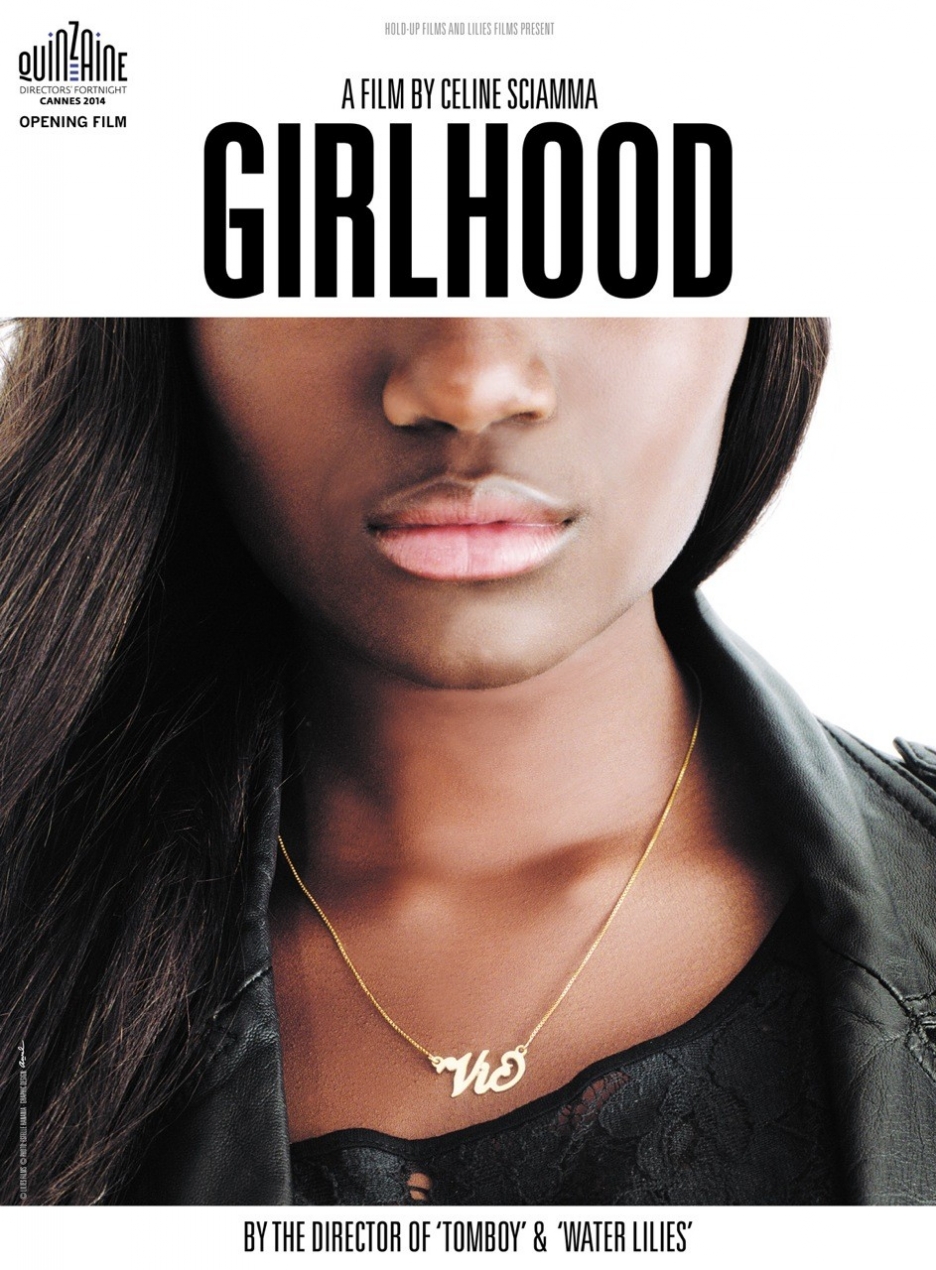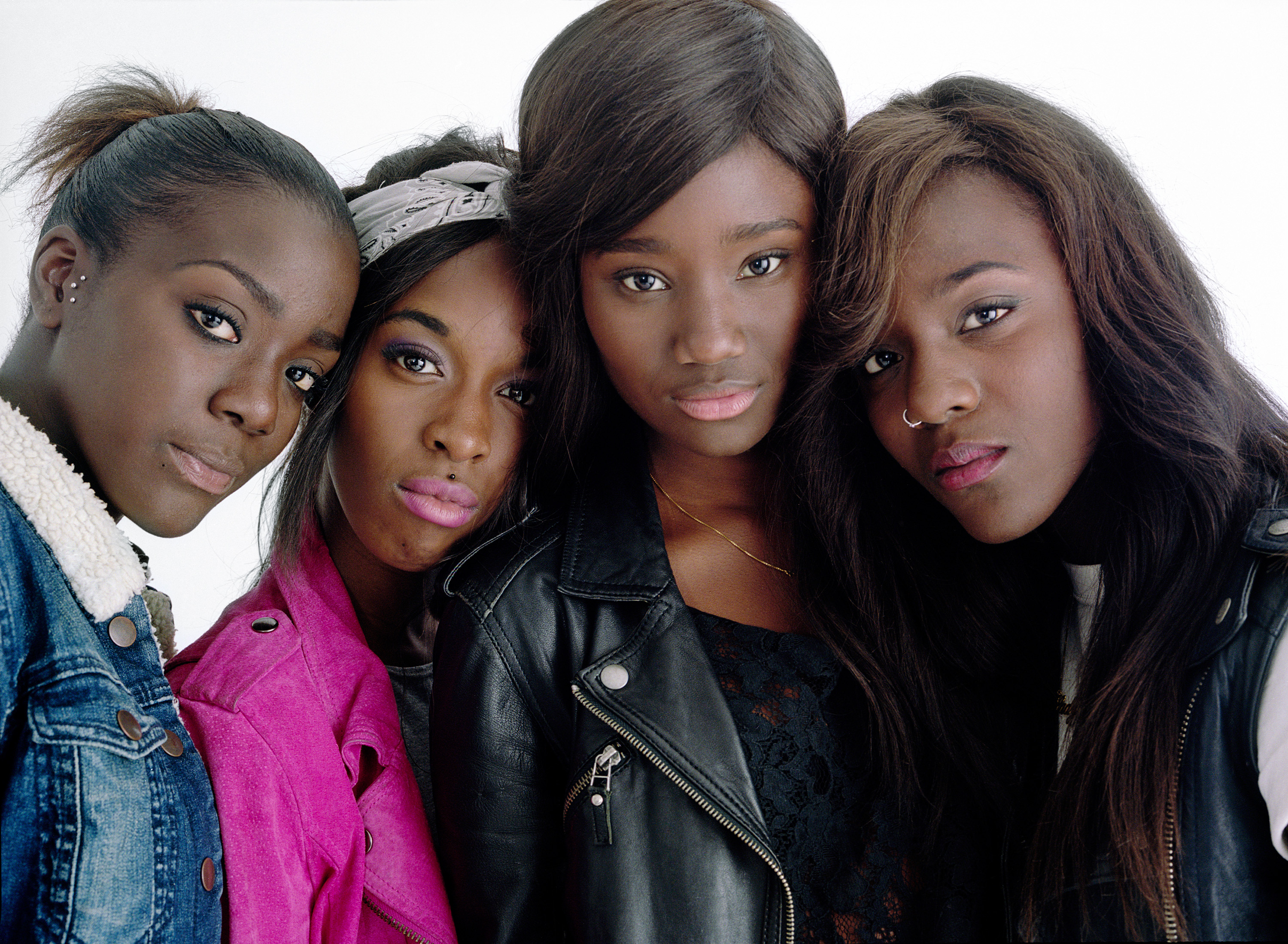 In Yes Please, Amy Poehler writes,
In Yes Please, Amy Poehler writes,
If you ever want to see heaven, watch a bunch of young girls play. They are all sweat and skinned knees. Energy and open faces.
Celine Sciamma's 2014 film Girlhood opens with just such a small slice of heaven: a group of French teenage girls play American football in an empty stadium. Unobserved by outside eyes, the girls throw, and tackle, and sprint. If not for the flashes of eyeliner and braids peaking out of their helmets, you'd be hardpressed to figure out who these young athletes were at all. This brief but intense scene is the last time these young women will be so carefree and unwatched. The rest of Sciamma's film is about growing up watched and watching, as one girl tries to break free of the constraints placed on her by class, gender, and race.
Marieme is a tall, shy tomboy living in the outskirts of Paris. Played with openfaced observance by Karidja Touré, Marieme is a frustrated dreamer. Told by her counselor that she doesn't have the grades for 2 years of high school, she leaves school rather than accepting vocational training. [More...]
Instead, Marieme falls in with a gang of girls led by the charismatic Lady (Assa Sylla). The girls provide Marieme with confidence and comeraderie, two things she lacked in a home defined by her constantly-working mother and abusive older brother. Together, the girls fight and dance and shoplift and celebrate each other. However, Marieme wants more for herself than that. She abandons them to work for a drug lord, eventually discovering that he's just as limiting as the world she left behind.
In many ways, Girlhood feels like the end of a trilogy for Sciamma. Again, Sciamma chooses a perceptive protagonist who quietly absorbs the actions of those around her in order to construct a new self. Like Water Lilies, Girlhood deals with issues of burgeoning sexuality and the exploration of desire, in this case Marieme's desire for her brother's friend Ismael. Like Tomboy, Girlhood shows the ways ideas of gender and race are performed and picked up by teenagers. After falling in with Lady's crew, Marieme ditches her cornrows and baggy clothing for straight hair and a leather jacket. Later, realizing that her gender makes her a target while dealing drugs, Marieme goes back to baggy clothing and cornrows.
Through all of this, Sciamma interweaves scenes of the girls just being teenagers. Sciamma shows them as they see themselves, glamorous in their stolen clothes and laughing with each other. The best such scene comes midway through, as the girls dance and lipsynch to Rhianna's "Diamonds in the Sky:"
Girlhood is a film with bigger, louder themes than its predecessors. Though Sciamma's third film is still a bildungsroman, it lacks the subtlety and personal touch of her previous two films. Too many of the male characters - the older brother and the drug dealer - fall into stereotypes of black men. However, in Marieme, Sciamma also has created her first protagonist who knows what she wants, even if she doesn't know how to get it. In the final shot of the film, Marieme leans against a pillar, contemplating her future She falls out of frame as a series of emotions - heartbreak, disappointment, anger - play across her face. When Marieme steps back into frame, she is determined, and maybe even hopeful. It's a powerful, simple shot that perfectly encapsulates Celine Sciamma as a director.
